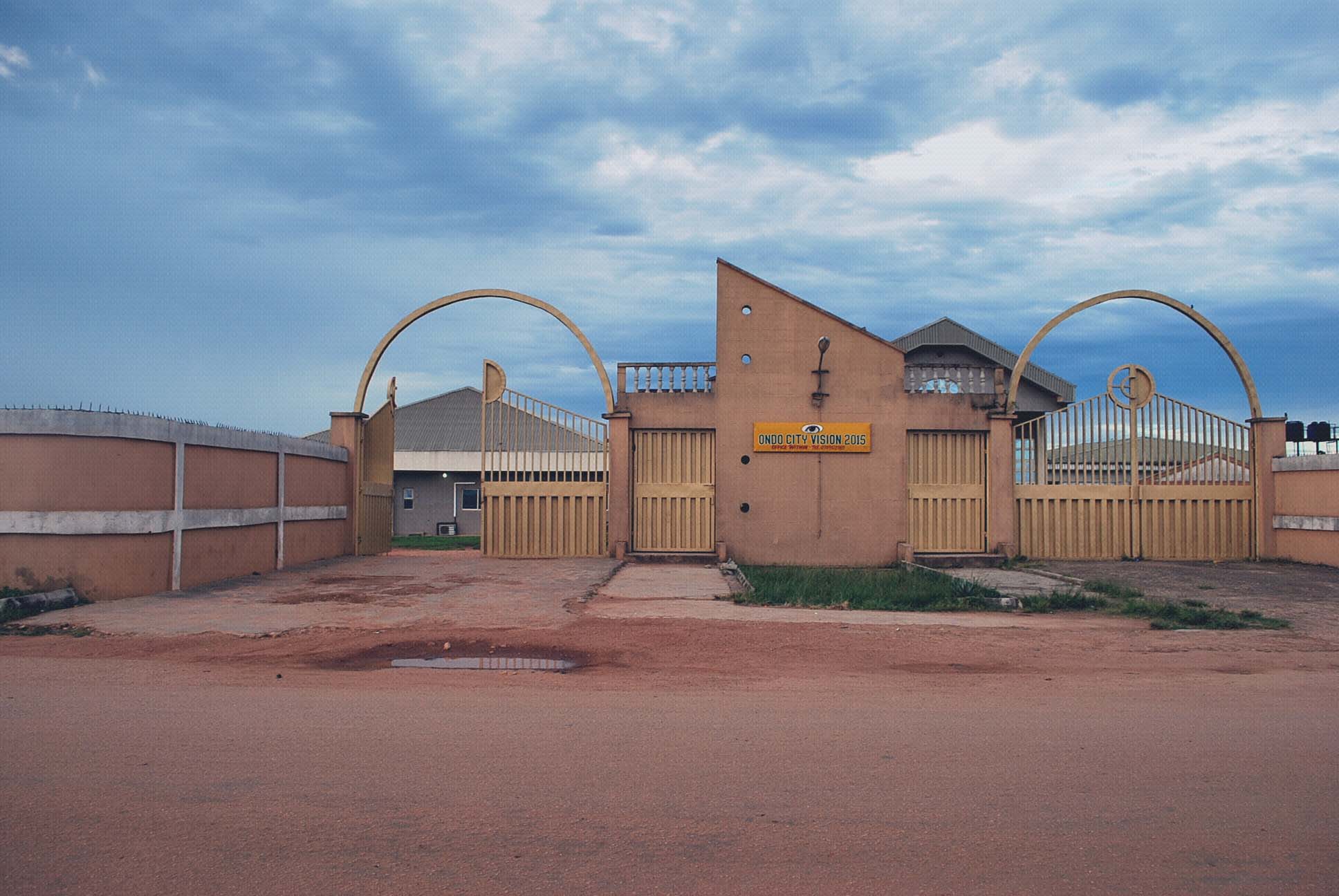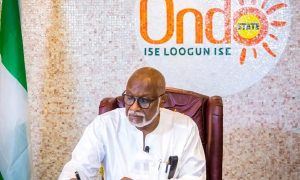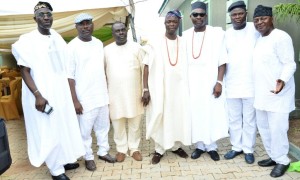HRH Oba Arilekolasi The Wealthiest Ondo Monarch Of The Nineteenth Century

Eastward Spread of the Yoruba Crisis and the Transformation of Ondo, 1830-1870 (Oba Arilekolasi, renowned as the wealthiest of the nineteenth century Ondo monarchs) Political and economic changes in northern Yorubaland, and along the Ife corridor gradually drew Ondo into the center of these developments. Thus events in Ondo and Ile-Ife were closely related—one seeming to have influenced the other. Ondo was well connected with Ife, lying to the southeast and on the trade route that linked Ijesa and Ife with Ijebu, Benin and the Atlantic coast. The possession of superior weaponry enabled Ife to raid and plunder towns in Ijesa, and Owu districts to sell slaves.
The diversion of trade routes through Ife and Ondo expanded the commercial and political power of the Osemawe such that the balance of power tilted in favour of the monarchy. Starting from about 1820, slaves were imported into Ondo from northern Yorubaland, Owu and the Egba districts and this continued until the destruction of Ondo around 1850. It did not take long for the new economic opportunities in increased traffic in slaves to change the socio-economic and political relations in Ondo. In Ondo, like other parts of Yorubaland, the ownership of slaves soon became a major indicator of wealth. The more slaves one possessed the more likely one was able to wield political and economic power.
The early nineteenth century saw the accession to the Ondo throne of Arilekolasi, renowned as the wealthiest of the nineteenth century Ondo monarchs. His reign marked a significant turning point as it saw Ondo playing more active roles in the slave trade. For instance, Ondo and Ife traders met at Oja-Ife (Ife market) located on Ile-Ife road, where they exchanged slaves for agricultural goods. Arilekolasi’s rise to power was influenced by his economic power, for it was said of him in 1879: “his great wealth and power excited the jealousy and apprehension of his people, and they tried to find occasion to make insurrection against him.” In order to situate his reign in its proper historical context, it is necessary to understand the various influences on his personality, placing them against the background of nineteenth century Ondo and Yoruba history.
Ondo traditions agree that Arilekolasi was a rich man, having inherited much wealth from his parents. For instance, Bada and Leigh suggest that he inherited 200 and 180 slaves from his father and mother respectively. His riches also included a substantial amount of money and cattle. Arilekolasi and his parents had benefited from the crisis in Owu and Oyo, which enabled them to participate in slave trading around Ife. The location of their farm/trade depot on the Ife road would seem to confirm this speculation. This suspicion is heightened by stories about the Oba’s antecedents. Traditions collected at Ondo and Oke-Igbo agreed on the point that Arilekolasi’s mother was an Ife woman, and that he himself lived either at Ile-Ife or Ifewara before his accession to the throne. As a young man, Arilekolasi had a base at Iperindo where he kept a substantial number of farm and trade slaves. Shortly after his elevation, he moved his Iperindo estate to Oko-igbo (forest farm, later corrupted to Okeigbo (forested hills) near a common market for Ife and Ondo traders.
The strategic location of both Okeigbo and Iperindo in relation to Ondo trade is important in analyzing why Arilekolasi and his parents decided to locate in these towns. As we have shown above, Okeigbo was the command post for Ife-Ondo trade from where commodities, particularly slaves were sold. Indeed with the destruction of Owu and Apomu, Okeigbo gradually emerged as the meeting point for Ife, Ondo, Ijesa, Egba and Ijebu traders. On the other hand, wars between Ife and Ijesa also generated many slaves. After 1840, Ibadan and Ilorin’s push into north-central Yorubaland increased the scale of slave production. These attracted Ijebu and Benin traders, and Iperindo lying on the Benin-Yoruba and Ijesa-Ondo-Ijebu route became a commercial depot. As soon as Ijesa was conquered, trade reduction in this area increased the lure of Okeigbo.
In effect, relocation to Okeigbo should be seen as a strategic movement targeted at increased participation routes through Ife and Ondo expanded the commercial and political power of the Osemawe such that the balance of power tilted in favour of the monarchy. Starting from about 1820, slaves were imported into Ondo from northern Yorubaland, Owu and the Egba districts and this continued until the destruction of Ondo around 1850. It did not take long for the new economic opportunities in increased traffic in slaves to change the socio-economic and political relations in Ondo. In Ondo, like other parts of Yorubaland, the ownership of slaves soon became a major indicator of wealth. The more slaves one possessed the more likely one was able to wield political and economic power.
In effect, relocation to Okeigbo should be seen as a strategic movement targeted at increased participation hands of Ondo, Ijebu and Egba raiders and traders. As soon as Oyo slaves were concentrated and merged with Oyo refugees, revolt became an attractive option. In Ondo also, its slaves could not escape towards Mahin, Ijebu or Benin. Hence after years of frustration, they allied with Ondo and Ife rebels to sack Ondo and like Modakeke, they established their maroon age only a few miles outside the Ondo wall. The above factor is as strong as that arising from the rise in the power of royal slaves/palace officials. These officials were executives carrying out the Oba’s orders. They also formed his inner circle of advisers and had influence over him, for he was largely dependent on them for the exercise of his authority. With this power, town chiefs would appear to have been gradually edged out of major decision-making. This would appear to be one of the major complaints in Ondo as we examine the career of some of the rebels.
Like Abeweela’s followers, Arilekolasi’s supporters at Okeigbo and Ondo continued in their acts of lawlessness, and this even increased after his death. According to Okeigbo tradition, Ajibike sent a message to Ooni Abeweela, requesting warriors to assist the pro-Arilekolasi party. At the time the message got to Ile-Ife, Aderinsoye Ologbenla, an Ife prince and warrior, was leading a campaign against Osorogi, an Ijesa town, and it was from there that he moved to Okeigbo. The Ondo civil war provided the opportunity for Ife to intervene in the war and later to plunder. From Okeigbo, Ife forces in collaboration with Ajibike, and Kulajolu, leading Arilekolasi’s slaves as well as freebooters from parts of Yorubaland joined the attack on Ondo, thus marking the beginning of the war, which destroyed Ondo town. During the Ondo civil war, Arilekolasi’s slaves also received support from some Ondo freeborn and chiefs. Indeed as we have seen with Ife, it is not impossible that divisions among Ondo chiefs encouraged the slaves to seek advantages for themselves. Disgruntled Ondo elements used the chaos to settle scores with their rivals, thereby joining the despoliation of their town.
Why were Ondo elements interested in the destruction of their towns? Apart from an obvious constitutional crisis and social tension between slaves and slave owners, the pattern of the rebellion showed some economic dimension. The northern Yoruba wars turned Ondo into a highway to the coast bringing traders and slaves, and perhaps refugees. This shift in the direction of trade routes encouraged ambitious men who desired more participation either by relocating their economic bases or turning to warfare. It is in this sense that we should see the movement of Arilekolasi’ slaves from Iperindo to Ife road, and Ile-Ife’s expansion into Ondo territory, On the other hand, the interests of free trade were in potential conflict with the interests of the Oba. Instead his ruling policy had always been protectionist and monopolistic. Rather than concede a part of the trade to his chiefs, Arilekolasi brought in foreign supporters to reinforce his control. While in the early nineteenth century, the possession of 380 slaves by the Osemawe was considered staggering, similar or higher numbers were not uncommon in the 1870s. Therefore the importance of large slaveholding was not lost on Ondo chiefs. Economic power meant political power especially since all but a few of the over 50 chieftaincy titles were open to all citizens. Hence, it was easy for rich personalities to buy titles and for junior titleholders to assume higher positions. Thus it could be assumed that those who lost out in the commercial political power struggle were at the forefront of the anti-Arilekolasi movement. Those who wanted the maintenance of the status quo joined the revolting slaves.
Owing to the different motives of the rebels, there was an evident split in their camp from about 1866. Kulajolu agreed to be elected the Odunwo (Ondo’s fourth highest office) and to fight against his former allies. From his action it is possible to interpret him as a soldier of fortune, or someone who might have lost a previous Chieftaincy contest, and therefore seized on the crisis as a means of revenge. According to Phillips “there were instances when one or two of their own chiefs made a common cause with the already powerful enemies and destroyed their own people.” Thus as soon as Kulajolu abandoned the rebels, he met stiff resistance from Ago, the new rebel leader, who carried out more raids on Ondo. The wars destroyed Ondo and as it progressed many Ondos even built shelters in the woods where they thought they could hide safely from the insurrectionists. A party under Osemawe Osungbedelola fled to Igbado while his Chiefs escaped to villages such as Oke-Opa, Erinla, Ewegbin, Ateu and Iwoye. From then on, the war turned into guerrilla operations, with few pitched battles, but several raids and kidnappings. Okeigbo continued her predatory activities against Ondo, raiding well into the northern half of Ondo and capturing trade around River Oni.
As the war dragged on, more warriors from Ile-Ife joined the rebels at Okeigbo. Because the wars/skirmishes were going on simultaneously with the Ife-Modakeke crisis, the influx of Ife elements into Oke-Igbo increased rapidly between 1850 and 1886. To many of the new immigrants, the Ondo crisis provided not only an escape from the pressures at home, but also an opportunity to enrich themselves through banditry. The greatest beneficiary, however, was Aderinsoye, who used the opportunity to build a strong political and economic base towards the realization of his ultimate ambition of becoming the Ooni of Ife. Unfortunately when he was elected to the throne in 1880, he could not return to Ife because of the continued conflict between Ife and Modakeke.
The fall of Ondo witnessed an outward migration of Ondo slaves towards Okeigbo, Ijebu and Ikale. Consequently, prominent Ondo Chiefs, among them High Chiefs Lisa Ogedengbe and Ayadi Edun (later Lisa), like the Oyo chiefs of the 1830s, established a framework for the reacquisition of their lost territories and defense of existing towns. One of the crucial decisions reached by the Ondo elite was that Ondo should seek assistance from Ilesa against Okeigbo. In return, Ondo would allow Ijesa traders to have free access to Benin, Ijebu and coastal markets. Since Ondo could not overpower Okeigbo, it turned southwards against the Ikale and Idoko for slave raiding. While the people of Ondo lived in exile, they benefited from the successes of Ibadan in Ijesa, Ekiti and Akoko districts. Located on a major trade route, Ondo received slaves through Ibadan, Ijebu, Ijesa and Benin traders. More slaves were also supplied in the 1880s as a result of the Kiriji and local wars in Ekiti. In fact, slaves from these towns were specifically sold to Ondo markets. Therefore, the patterns of Ondo wars and commerce ultimately influenced the ethnic identity of slaves in the settlement.
Warfare and trade enriched Ondo Chiefs, and by the 1870s, a socio-economic system strongly influenced by slavery had developed. The average size of slave holdings in the large households was about 20, but there were warlords and ranking chiefs who had over 100 slaves. In the 1840s, Arilekolasi’s slaves were estimated at 380 but in 1875, the slaves and other clients of Edun were estimated at about 800. Half of Edun’s dependants were his full time soldiers, whom he grouped into platoons. Each soldier had two guns, while each platoon head had five guns. Other Ondo Chiefs such as Sara who died in 1875 had a farm filled with his slaves while his successor who died in March 1877 had about 100 slaves.
Source: Ekimogundescendant





































